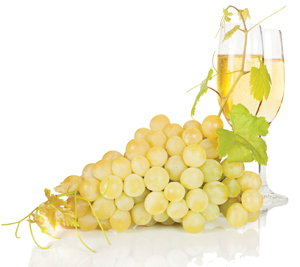Posted on Apr 1, 2016 in
DELICIOUS,
FEATURES
 VineSleuth | By Amy Gross –
VineSleuth | By Amy Gross –
We made it to April, when Houston has the most glorious weather of the year. I think it is time to enjoy a glass of Champagne to celebrate, don’t you? And while we are enjoying our bubbly, let’s talk a bit about all that glorious fizzy stuff.
First things first. Champagne is a specific type of sparkling wine that is grown and made in Champagne, France. To be called Champagne, the wine must be from that region and be made using a particular method. Regional laws also dictate the grapes used.
For decades, people called many sparkling wines Champagne, but the French didn’t like that, so they mounted a campaign to protect the name. There are a few wineries in California who used the name “California Champagne,” but that ended with any labels approved after 2006.
Yes, other sparkling wines are made by the same method, and yes, other sparkling wines may use the same grapes, but those are not officially called Champagne, because Champagne is a place in France, and only wines made in Champagne can be called Champagne.
You might be wondering how Champagne and sparkling wines get those bubbles in the bottle. There are several ways sparkling wines can be made. We’ll cover the Champagne method.
In Champagne, the winemakers use Chardonnay, Pinot Noir and Pinot Meunier grapes. Those grow beautifully there, as it is one of France’s coolest grape-growing regions, and so it makes sense they would use those to make their wine. These grapes yield high-acid, moderate alcohol and non-tannic wine, which is regarded to be a perfect combination in sparkling wine.
The Process
First, the grapes are picked and pressed to make the base wine. In making the base wine, the winery handles the grapes very delicately, and the grapes go through several pressings, with each round of juice kept separate so they can be used in different quantities in the final blend. This base wine settles for a bit and then goes through its first round of fermentation as any other white wine would.
After fermentation, the wine is blended with other base wines. These other base wines could be different pressings from the same fruit, juice from other grapes, juice from another vineyard or even base wine from a different vintage. This is where the winemaker really tunes the wine to get the intended flavor.
Next, the magic that is Champagne happens. The wine is bottled, and a mixture of yeast and sugar called liqueur de tirage is added to each to initiate the second fermentation and birth those glorious bubbles. The bottle is sealed with a crown cap and left to sit and ferment as the yeast works its wonders. When this happens, the bubbles cannot be seen, but they are there. The alcohol level increases and the carbon dioxide builds a crazy amount of pressure in the bottle – about six atmospheres of pressure! As this happens, the yeast leaves a sediment in the bottle that gives its toasty, yeasty flavor.
Before you see the wine, though, that sediment has to be removed through a process called riddling and then disgorging. Disgorging is especially tricky, because the bottle is opened and the sediment is removed, and remember, there are six atmospheres of pressure in there that have to be preserved! When this happens, some volume escapes, so the winery adds a bit of wine to the bottle to top off what escaped during disgorgement. It also adds a bit of sweetness, typically in the form of cane sugar. This is where sparkling wine becomes brut, extra dry, dry, demi-sec or doux, depending on the amount of sugar added. Next, the wine is capped with a cork and a wire cage for safety, then bottle aged for a bit before releasing.
This method, like I mentioned, is used to make other sparkling wines, too, not just Champagne. You can tell a wine is made the way Champagne is made if the bottle says “Method Traditionelle,” “Classic Method,” or “Fermented in This Bottle.” French cremant, Spanish Cava and Italian Franciacorta and Talento, as well as most United States’ premium sparkling wines, are made this way too.
We’ll talk about other ways to get bubbles into wine another day. For now, let’s just celebrate Champagne. So, while toasting this gorgeous weather, toast yourself for knowing the difference between Champagne and sparkling wine. And enjoy those glorious bubbles!
Cheers, friends!


 <
<






 VineSleuth | By Amy Gross –
VineSleuth | By Amy Gross –